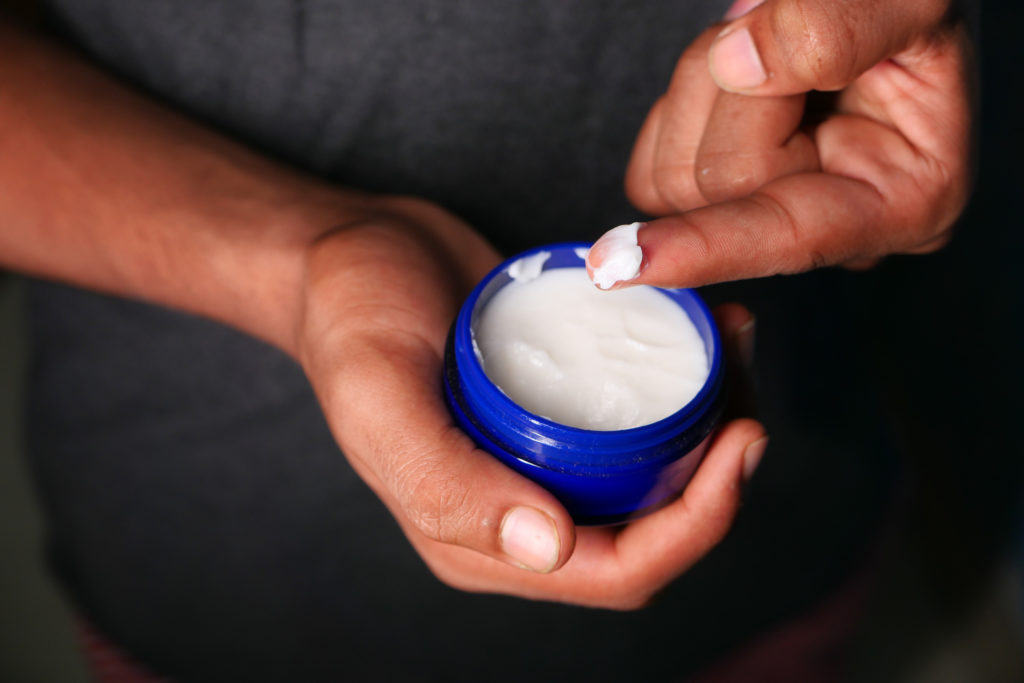It’s common knowledge that many things can be absorbed through the skin. Transdermal delivery of drugs is routine, even in over-the-counter products (think nicotine stop-smoking patches).
But what you may find surprising is the sheer number of goods, from medical supplies and devices to lotions and shampoos, that contain the toxic ingredient in MSG (the manufactured free glutamic acid we refer to as MfG) — which also can be readily absorbed through your skin. *
If you are savvy and go out of your way to avoid MSG and MfG in food, it makes perfect sense to also avoid using these products on your skin. And just like reactions to MfG taken in food are dose-related, for those who have extreme sensitivities to MfG, it appears that even incredibly small amounts applied topically can cause reactions.
For Truth in Labeling Campaign co-founder Jack Samuels, that was the case. Even a small amount of MfG-containing guar gum used in heart-monitor contacts brought on atrial fibrillation that would last for 3-4 days after the contacts were removed.
This is how Jack described it: “When I left the hospital, I convinced the nurse to give me a sample of the heart monitor contacts that had been glued to my chest. They were Red Dot contacts produced by 3M. I’d asked for the sample because as they removed the contacts from my chest, I observed that the center of each contact that had touched my skin had a small bulb of gelatinous material. I knew that the glue on the contact likely contained some starch, an ingredient that would have small amounts of MSG, but I didn’t think such a small amount would cause such an immediate reaction. After the contacts were removed, I realized there would also have been MSG in the gelatin that had made contact with my skin.
“Back home, I contacted 3M, told them of my situation, and asked for a list of the ingredients used in the Red Dot product. They refused, stating the information was proprietary. I then called a friend who was a major 3M customer, and asked for his help in getting the ingredient list.
“It turned out that it was the guar gum in the gelatinous material that was the offending ingredient. The 3M laboratory had found a small amount of free glutamic acid in the guar gum, which, they claimed in a carefully worded e-mail, was so very small that it wouldn’t have caused my reaction. I wish I had $10 for each time I’ve heard someone say that the amount of MSG was so small I couldn’t have reacted to it.” (From “It Wasn’t Alzheimer’s, it Was MSG,” a free download of which is available here.)
While the 3M products that Jack encountered were considered medical devices, the MfG that your skin is more likely to come into contact with will be natural-sounding skin and hair products sold just about everywhere. Many will have glutamate, glutamic acid, or amino acids in the ingredient listings, or ingredients that are hydrolyzed. (Any hydrolyzed ingredient will always contain MfG.)
Disodium cocoyl glutamate is a cleansing agent and surfactant derived from glutamic acid. We found it in Burt’s Bees, Alba Botanical and Weleda products.
One company named Fenchem launched a line of amino-acid-based surfactants a few years back with ingredients derived from L-glutamic acid given names such as SLG-95 (sodium lauroyl glutamate) and LGA-95 (lauroyl glutamic acid). Selling directly to cosmetic manufacturers, the company claimed its products would “overcome” the “fears” many consumers have over “personal health” and help to replace petrochemical-based ingredients.

And if you think some regulatory agency is watching over what we shower with, shave with and put on our heads, think again. The law does not require cosmetic products and ingredients other than color additives to have FDA approval before they go on the market.
Interestingly, while no FDA approval is required to sell personal care products, 11 ingredients have been banned (or in some cases, restricted) by the FDA. Mercury compounds are one. While that may sound as if the FDA is paying attention, compare that to the EU, which has banned 1,328 chemicals from being used in cosmetics, requires pre-market safety evaluations and mandatory registration.
And when the FDA talks about “safety data” on cosmetic ingredients, you will always find mention of Cosmetic Ingredient Review (CIR), an industry-funded panel of experts who “review the safety of cosmetic ingredients.”
The CIR 2013 “Safety Assessment of alpha-amino acids as used in cosmetics” concluded that “glutamic acid is safe in the present practices of use and concentration in cosmetics.” That determination was based, in part, on the fact that the amino acids reviewed by the CIR are “found in foods, and the daily exposure from food use would result in a much larger systemic dose than that resulting from use in cosmetic products….Consequently, the systemic toxicity potential is not addressed (emphasis added) further in this report. The safety focus of use of these amino acids as cosmetic ingredients is on the potential for irritation and sensitization.”
The bottom line is that shopping for soaps, lotions and shampoo can be just as tricky as food shopping, especially when it comes to avoiding MfG. Fortunately, there still are plenty of truly natural products to choose from, along with real food and herbal ingredients that will allow you to bypass these chemical concoctions altogether.
*Food ingredients that contain manufactured free glutamate (MfG)
If you have questions or comments, we’d love to hear from you. If you have hints for others on how to avoid exposure to MfG, send them along, too, and we’ll put them up on Facebook. Or you can reach us at questionsaboutmsg@gmail.com and follow us on Twitter @truthlabeling.


